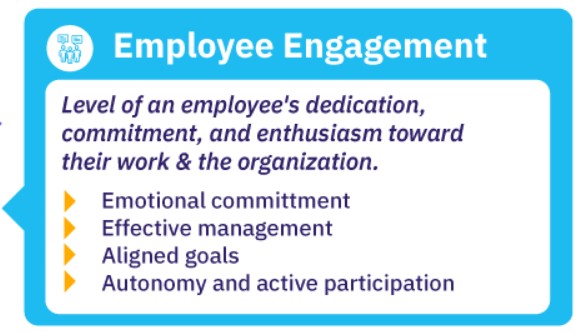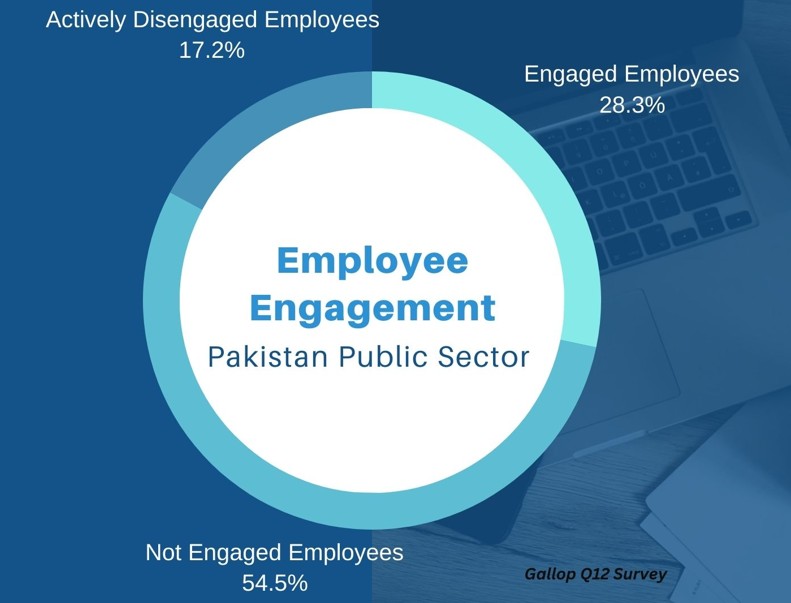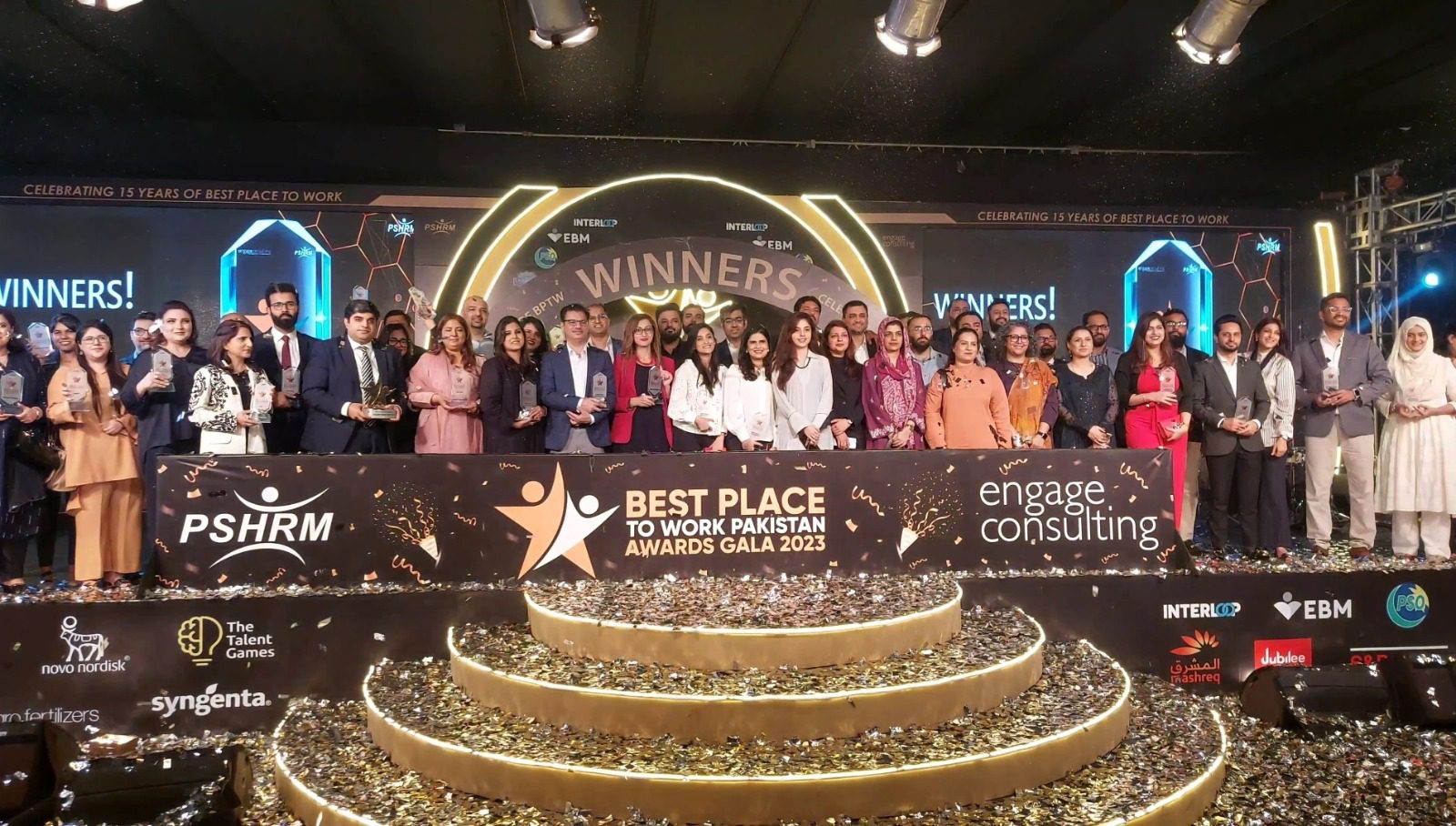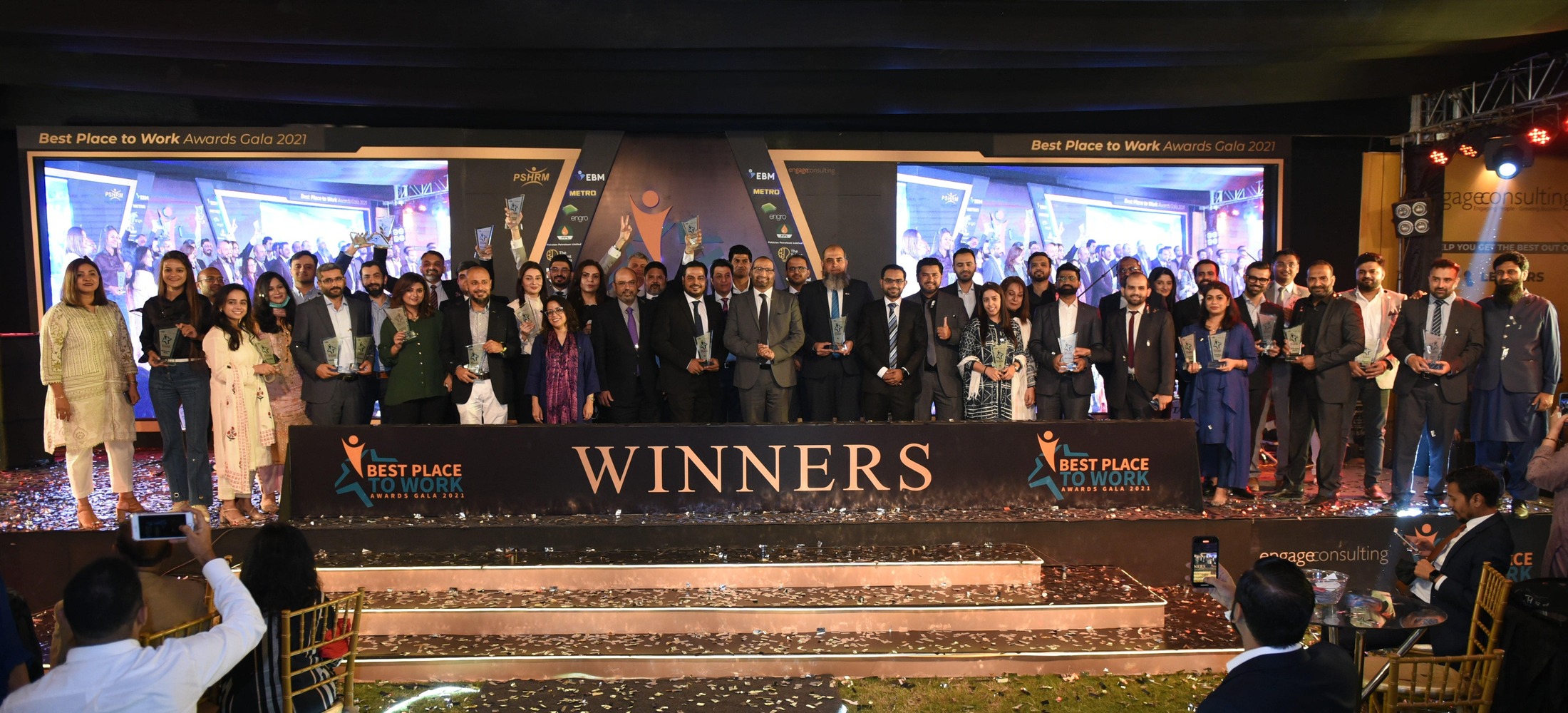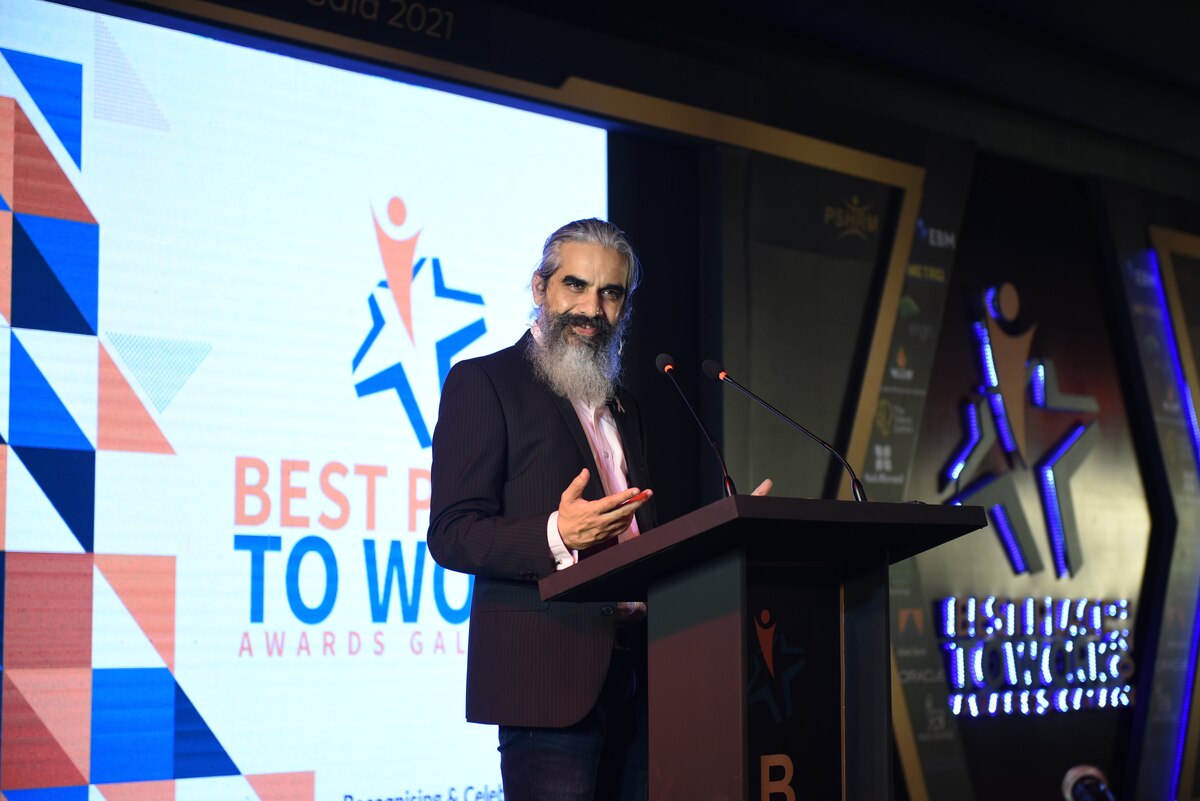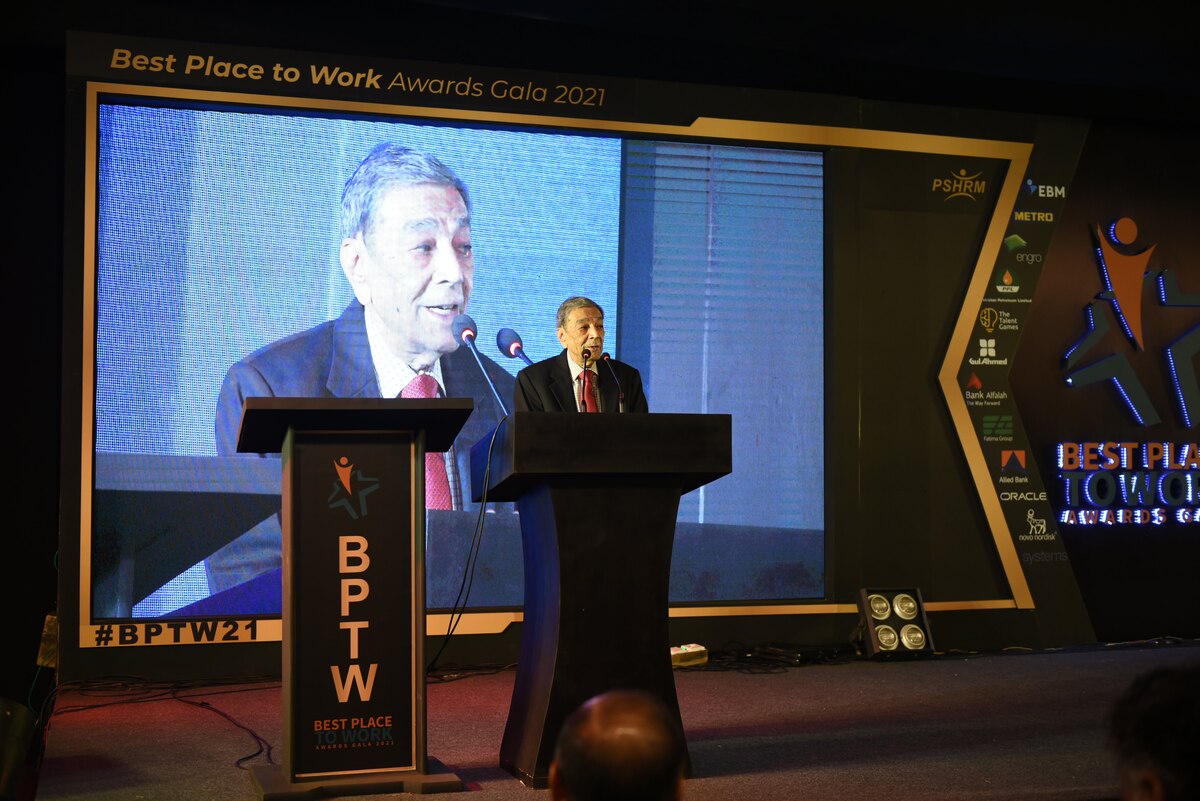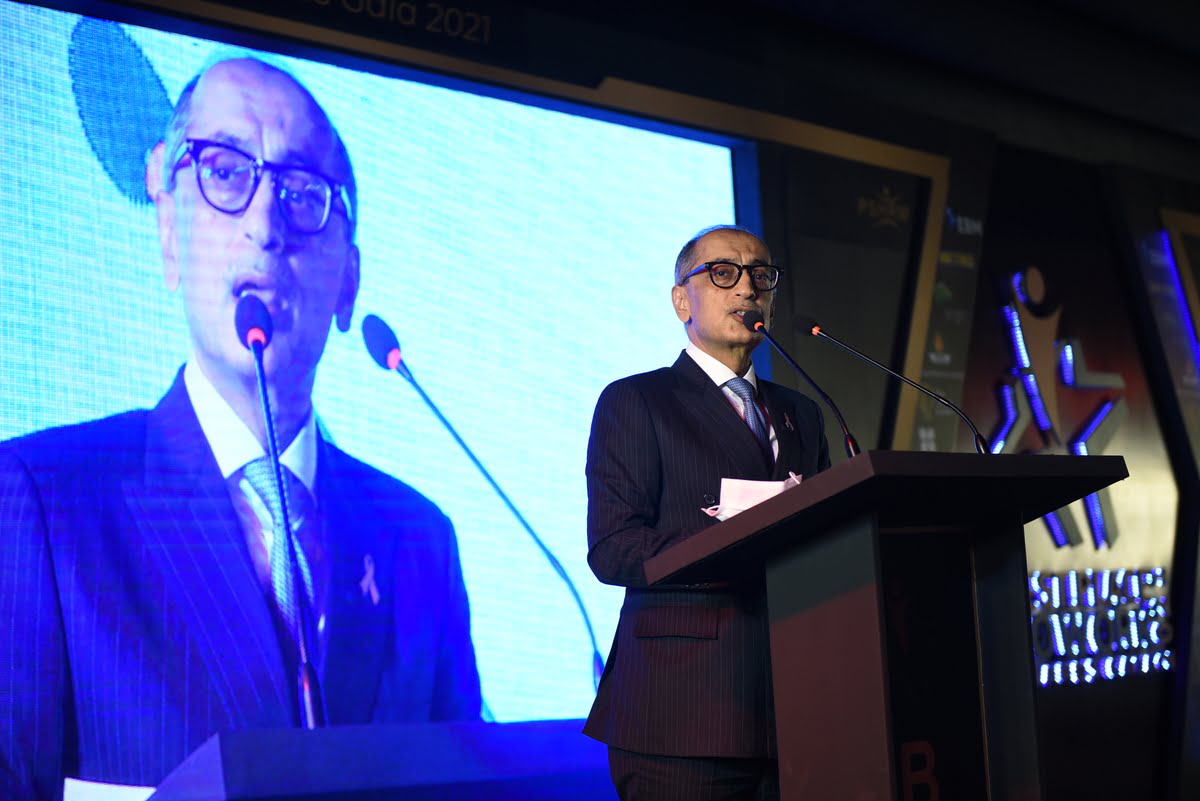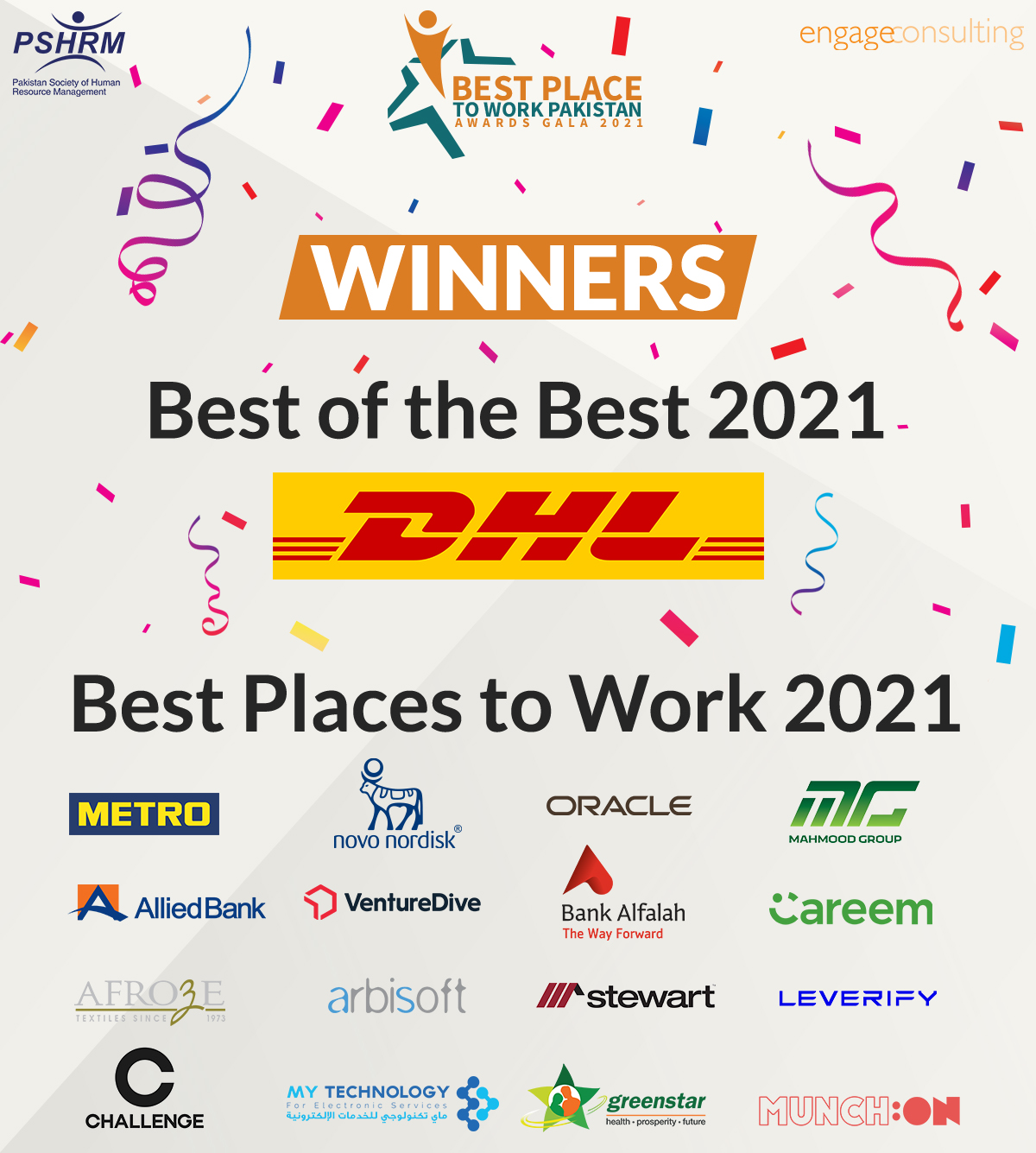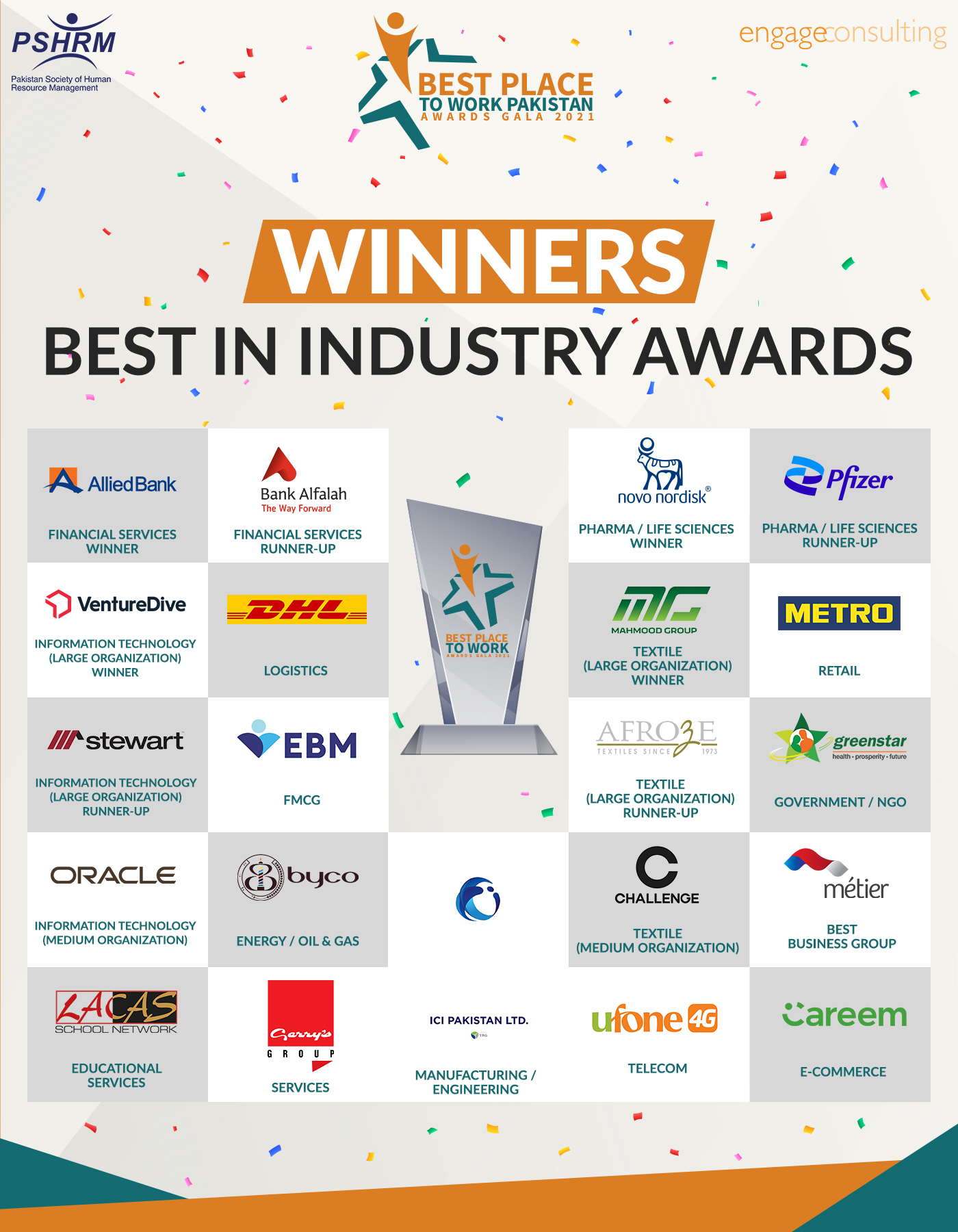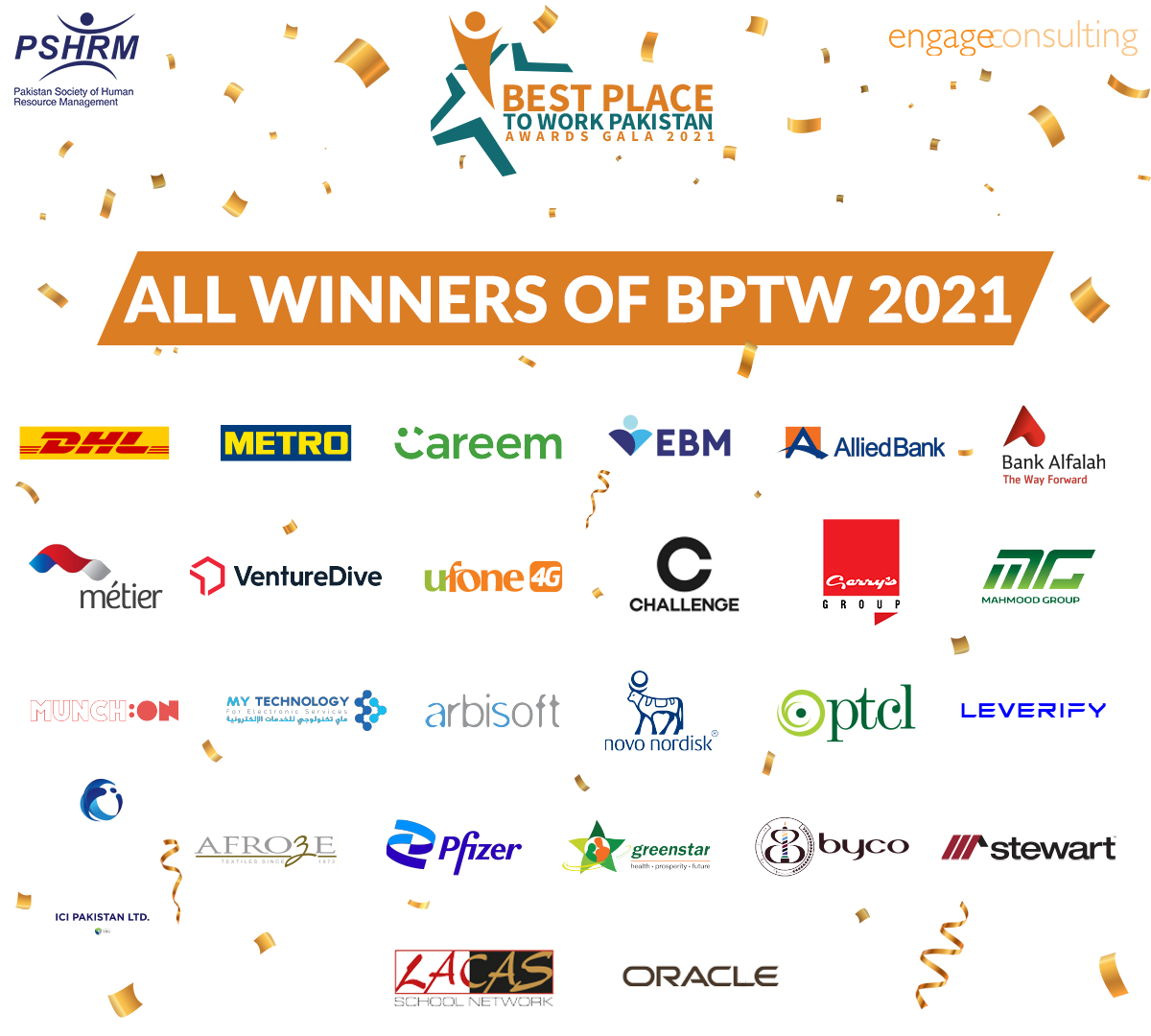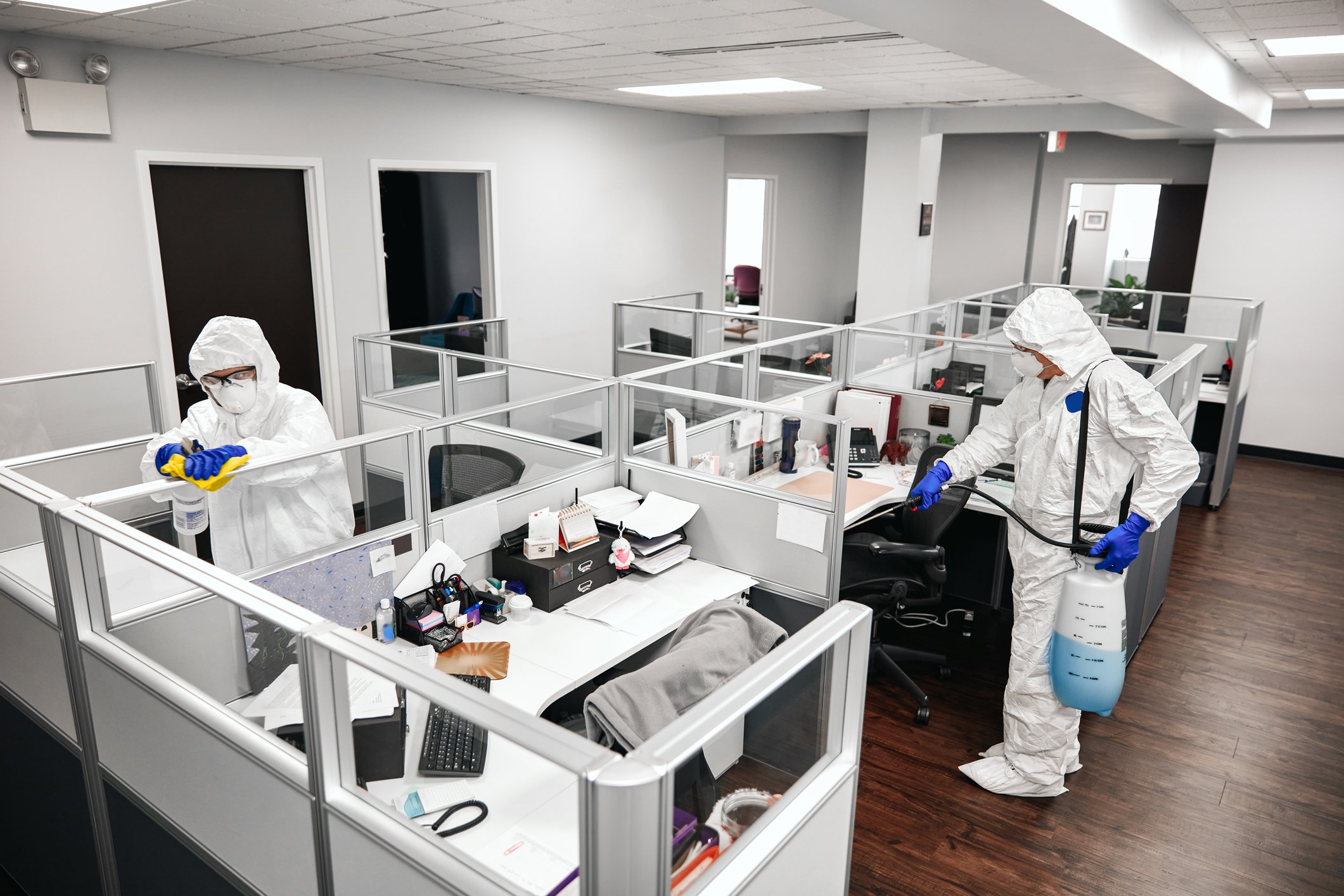Is your company’s culture helping your people do their best work, or quietly pushing them out the door? Culture isn’t something you can fix overnight, but it’s not as mysterious as it may seem either. The small everyday things matter. And they add up. So if you’re looking for practical starting points, here are five simple, proven ways to begin improving workplace culture right away. Workplace culture is like the air your organisation breathes. It is often invisible, yet deeply felt. It’s what determines whether people show up with energy or apathy. And in today’s fast-moving environment, where employee expectations are evolving rapidly, culture has quietly become one of the strongest indicators of organisational health. According to a 2023 PwC study, 69% of senior leaders said culture gives their organisation a competitive edge. This matters because a good salary or perks can bring people in the door, but culture is what makes them stay or leave. Poor culture can mask itself as performance issues, low engagement, or high turnover, while a strong one fuels collaboration, purpose, and innovation. And in a time where reputation spreads at lightning speed, the internal experience of employees increasingly shapes the external brand. Source: Gallup Whether you’re in HR or leadership, creating a better workplace culture begins with small, intentional changes. These five practical steps are designed to help you get started today, with tools you already have or can adopt with ease. The easiest way to start improving culture is to first understand it. That’s where a good engagement survey comes in. We’ve seen this work firsthand. At Engage Consulting, our EC Engage survey has helped companies like Engro Fertilizers and HBL spot blind spots, identify strengths, and act on what truly matters to their people. When leaders have data they can trust, they can make choices that actually work. For instance, Engro was able to redesign parts of its internal communication based on feedback patterns from different teams. Meanwhile, HBL used survey insights to guide their leadership development efforts. This kind of clarity isn’t just nice to have. It’s the starting point for real cultural change. But not all surveys are equal. The format matters. The timing matters. And most of all, what you do afterwards matters. If you’re not closing the loop with employees, culture won’t improve. Once you’ve got feedback from across the business, the next step is enabling those who carry your culture day to day: your managers. Managers have the biggest impact on how people feel about work. Yet they’re often the most undertrained and overworked part of the system. Providing team-level insights from engagement surveys can help, but only if it comes with support. Workshops, manager huddles, and short coaching sessions can make a huge difference. The key is to make leadership development practical and consistent. Start small. A monthly roundtable. A five-minute “culture check” during team meetings. These actions send a clear message: culture matters, and we’re working on it together. One of the fastest ways to damage workplace culture is through unclear or inauthentic communication. Too often, employees feel like they’re the last to know what’s going on. Or worse, they receive top-down updates that don’t feel human. A healthier culture starts with more open, two-way communication. That doesn’t mean more emails. It means better conversations. Use simple language. Drop the corporate tone. Make space for questions and listen with the intent to act. Here are a few ways to make communication more cultural: When employees see that honesty is the norm, they respond with more trust, more care, and more commitment. People don’t leave companies where they feel seen and valued. Recognition is one of the simplest ways to boost morale, and it doesn’t need to cost a thing. A quick shout-out in a team meeting. A handwritten note. A public thank-you on Slack. These things sound small, but they build emotional equity. The trick is to make it regular and specific. “Great job” doesn’t mean much on its own. “I noticed how you stayed late to help the new intern” does. You can also build peer-to-peer recognition into your internal platforms or meetings. When it becomes part of the culture, people start looking for what’s going right. And over time, that creates a more positive and appreciative workplace. Lots of companies have values on posters. Fewer have values that actually show up in how people behave. Improving workplace culture means making sure your stated values are backed by lived actions. If “collaboration” is one of your values, but rewards only go to individual performers, something’s off. Ask yourself: How do our systems support or contradict our values? Look at how you promote, how you give feedback, how decisions are made. Culture lives in these moments. The more consistency people see between what’s said and what’s done, the more they trust the environment. One way to get there is by involving employees in redefining values. Run a workshop. Collect anonymous suggestions. Let people talk about what these values should look like in action. This bottom-up approach not only helps with alignment, it boosts ownership. And a culture people feel part of is one they’re more likely to protect. Improving workplace culture isn’t about grand gestures or flashy programmes. It’s about starting small, listening well, and acting with intent. Surveys like EC Engage give you the insight. But it’s the people and the follow-through that shape what happens next. If you’re ready to take the first step, start by asking your people what they really think. You might be surprised by how much they already know.Why Improving Workplace Culture Is Important?
5 Practical Ways to Start Improving Workplace Culture Today
1. Start with an Engagement Survey (The Right Kind)
2. Give Managers the Tools to Lead Better
3. Keep Communication Real
• Hold informal town halls with leadership
• Use anonymous suggestion boxes for regular input
• Share small wins across teams
• Be transparent about what’s changing and why
4. Recognise More (And Not Just for Big Wins)
5. Align Values with Everyday Behaviour
Final Thought
Category: Uncategorized
How to Measure Employee Engagement Effectively: 5 Signs You’re Missing
“What gets measured gets managed.” – Peter Drucker
That quote holds true for employee engagement. If you aren’t measuring it the right way, you’re likely missing key insights and managing based on assumptions.
Disengagement doesn’t always look dramatic. It often hides in missed deadlines, low energy, and a quiet drop in motivation that builds over time. According to Gallup, companies with highly engaged employees experience 21% greater profitability and 17% higher productivity.
In this blog, you’ll discover how to measure employee engagement effectively, five subtle signs you might be missing, and how Engage Consulting’s award-winning Employee Engagement Survey can help you uncover what really matters to your people.
Why Measuring Employee Engagement Matters
Measuring employee engagement is essential for creating a thriving workplace. When engagement is high, employees feel motivated and aligned with the company’s goals, which directly impacts performance and morale.
Here’s why it matters:

Think about a time when you felt truly invested in your work; when you were excited about a project and gave it your all. That’s the power of engagement in action. When employees feel connected to their roles, they perform better, contribute more, and talk positively about the workplace.
By measuring engagement, leaders can identify key areas for improvement and foster an environment that promotes motivation, retention, and long-term success.
Top 5 Effective Methods to Measure Employee Engagement
While engagement may feel intangible, the right methods can translate employee sentiment into measurable data. These approaches go beyond surface-level feedback to uncover what truly drives or hinders engagement within your organization.
1. Employee Engagement Surveys
Unlike casual conversations or gut instincts, engagement surveys provide structured, quantitative data that helps uncover what employees truly feel about their roles, leaders, and the organization as a whole. Measuring sentiment is essential because employee perceptions often shape morale, productivity, and retention outcomes.
For instance, surveys can explore areas such as whether employees feel their work is meaningful, if they trust leadership, or if they see growth opportunities. This level of data allows HR teams to make informed, strategic decisions backed by evidence.
At Engage Consulting, our Employee Engagement Survey has helped organizations like HBL and PepsiCo gain critical insights into their workforce. The tool is customizable, anonymous, and benchmarked making it ideal for identifying areas that need improvement and tracking progress over time.
2. Pulse Surveys
Pulse surveys are a more agile and frequent alternative to traditional engagement surveys. While engagement surveys are comprehensive and often conducted annually or bi-annually, pulse surveys are short, targeted, and deployed more frequently such as often monthly or quarterly.
This makes them perfect for tracking changes after leadership shifts, policy updates, or major organizational changes. Companies like Unilever and Spotify have adopted pulse surveys to quickly gauge morale and respond to issues before they escalate.
They’re typically 5–10 questions long and can be delivered digitally via email or mobile platforms, ensuring high participation and real-time feedback that fuels rapid HR interventions.
3. One-on-One Meetings
Structured check-ins between managers and employees go beyond performance reviews. They offer a window into an individual’s day-to-day engagement. These meetings help uncover emotional drivers, frustrations, and goals that employees may not feel comfortable sharing in group settings or surveys.
When done regularly, they build trust and open communication. For example, a manager may learn that a team member feels overlooked during team meetings, or that their workload is becoming overwhelming like issues that, if addressed early, can boost engagement and retention.
4. Exit Interviews
Every resignation carries a story and exit interviews are one of the best tools to uncover why people actually leave. Disengagement is often a gradual process, and outgoing employees are more likely to speak openly about what went wrong, offering unfiltered insights into company culture, management, or workload issues.
By analyzing exit interview data over time, organizations can identify patterns like frequent complaints about career development or team communication and make proactive changes to prevent further attrition.
5. Performance Metrics
Engagement isn’t always verbal. It often shows in how people work. Performance indicators such as rising absenteeism, sudden dips in productivity, or increased error rates may all signal disengagement.
Tracking these metrics alongside engagement data gives a fuller picture. For instance, a team showing declining performance may not lack skill but motivation or purpose. By identifying such red flags early, leaders can intervene with coaching, recognition, or adjustments to team dynamics.
5 Signs of Employee Disengagement You Might Be Missing
Disengagement often creeps in quietly, showing up through subtle changes in behavior before it becomes a bigger issue. Recognizing these early signs can help managers intervene effectively, boost morale, and prevent long-term productivity loss.

1. Declining Participation in Meetings
When a previously vocal team member becomes quiet during meetings, it may be a warning sign. They might no longer share updates, offer suggestions, or show curiosity about ongoing projects. Their camera might stay off in virtual calls, and they may seem distracted or disinterested.
This behavioral shift is often more than just fatigue—it can signal growing dissatisfaction, lack of motivation, or feeling disconnected from the team or purpose. Over time, this passive participation can demoralize other employees and reduce the overall energy and effectiveness of team discussions.
2. Reduced Collaboration
Teamwork thrives on open communication, trust, and a shared drive toward goals. When employees begin avoiding group projects or prefer working in isolation, it could indicate disengagement. They may withdraw from Slack channels, ignore group emails, or avoid cross-functional collaborations.
Reduced collaboration usually points to a deeper issue, perhaps a misalignment with the organization’s direction, burnout, or lack of psychological safety. When left unaddressed, it creates silos, hampers innovation, and reduces knowledge-sharing, ultimately weakening team culture and output.
3. Minimal Feedback or Suggestions
Engaged employees naturally share ideas to improve workflows, systems, and culture. When those contributions dry up, it’s not just silence, it’s often a sign of emotional withdrawal. Employees may stop raising issues, skip performance check-ins, or no longer offer feedback during retrospectives.
This lack of initiative signals that they may not believe their voice matters. It can stem from past experiences of being ignored, criticized, or undervalued. A decline in feedback culture can lead to stagnation and missed opportunities for positive change and innovation.
4. Increased Absenteeism
While occasional absences are normal, a consistent rise in unplanned leaves, late arrivals, or early exits should raise concerns. Disengaged employees might call in sick more frequently or avoid work without strong reasons. It’s often a sign of growing emotional or mental fatigue.
This pattern can disrupt team momentum and morale, especially if it becomes habitual. When people stop feeling accountable or connected to their role, they slowly withdraw physically through absenteeism, and mentally, by disengaging from their responsibilities.
5. Lack of Initiative
A proactive employee often seeks new responsibilities, proposes improvements, and shows eagerness to grow. When this energy fades, and they shy away from taking on challenges, something is likely off. They may avoid leadership roles or stop asking about career development opportunities.
This reluctance often stems from feeling unrecognized, overworked, or disconnected from purpose. It can cause a ripple effect, reducing innovation, lowering productivity, and creating a sense of stagnation within the team. Over time, it can also affect the employee’s career growth and overall team progress.
Leveraging Engage Consulting's Employee Engagement Survey
At Engage Consulting, we specialize in helping organizations measure and enhance employee engagement. Our comprehensive Employee Engagement Survey is designed to uncover deep insights into your workforce’s sentiments and identify actionable areas for improvement.
Key Features of Our Survey:
Our Employee Engagement Survey is designed to deliver clear, actionable insights, tailored precisely to your organization’s needs. Here’s what makes it stand out:
-
Customized questionnaires that reflect your company’s culture, goals, and employee experience.
-
Benchmarking capabilities that allow you to measure your performance against industry peers.
-
Comprehensive reports offering clear analysis, key findings, and practical recommendations.
-
Full anonymity assurance to encourage honest, transparent employee feedback.
Benefits of Using Our Survey:
Using our survey goes beyond measurement. It helps you create real, lasting improvements in your workplace. Here’s what you can expect:
-
Higher employee retention by identifying and addressing engagement risks early.
-
Increased productivity as engaged employees contribute more enthusiastically to company goals.
-
Smarter leadership decisions guided by clear, data-driven insights.
-
A healthier, more positive work environment that attracts and keeps top talent.
By partnering with Engage Consulting, you gain access to tools and expertise that drive meaningful organizational change.
Conclusion
Effectively measuring employee engagement is crucial for organizational success. By recognizing subtle signs of disengagement and employing comprehensive measurement strategies, organizations can foster a more engaged, productive, and satisfied workforce.
Engage Consulting is here to support you in this journey. Our Employee Engagement Survey provides the insights needed to make informed decisions and cultivate a thriving workplace culture.
Employee Engagement in Pakistan: Trends and Strategies for 2025
Whether it’s attracting high-potential candidates or keeping teams aligned with organizational goals, employee engagement is now a business necessity. The global talent shortage has made it crucial for companies to rethink how they retain and motivate employees. A disengaged workforce leads to high turnover, low productivity, and declining business performance, making engagement a top priority for organizations in Pakistan and beyond. As Pakistan’s economy grows, job opportunities are increasing, making it more challenging for companies to attract and retain talent. Research confirms that employee engagement directly impacts attrition rates, but a “satisfied” employee isn’t necessarily loyal or high-performing. Organizations must go beyond basic satisfaction to foster real commitment. Companies that actively monitor engagement understand its role in reducing unhealthy attrition—where top talent leaves, causing brain drain. With workplace loyalty on the decline, engagement is no longer optional; it’s a strategic necessity. So, where does Pakistan currently stand on employee engagement? Let’s explore the current landscape and key trends shaping the future. Source: AIHR Despite growing awareness, employee engagement remains a challenge for many organizations in Pakistan. A recent study revealed that only 28% of employees in Pakistan feel engaged at work, with the rest either disengaged or actively looking for better opportunities. Factors like outdated management styles, lack of career development, and limited recognition contribute to low engagement levels. Here is a review of the employee engagement ratio of Pakistan in public sector. To stay ahead, companies in Pakistan must align their strategies with evolving workplace trends. Here are the top trends defining employee engagement in 2025: With workplaces becoming more digital, companies are leveraging engagement survey tools like those offered by Engage Consulting to measure employee sentiment and drive improvements. Systems used Engage Consulting’s Engagement Survey Tool to measure employee engagement levels and identify a roadmap to improve them. Fatima Group benefited from the Engage Consulting Leadership Academy, a combination of educational workshops, individual coaching, and 360-degree assessments, to build stronger leadership and drive employee engagement. Lucky Core Industries (LCI) utilized Engage Consulting’s engagement surveys to continuously monitor and enhance workplace culture, leading to improved retention and satisfaction. The shift toward hybrid work models has become a long-term reality, offering employees greater flexibility while maintaining productivity. Industries adopted this approach due to changing workforce expectations post-pandemic and advancements in remote collaboration tools. Companies like Telenor Pakistan and Jazz have successfully implemented hybrid models, leading to increased employee satisfaction and reduced operational costs. This approach helps organizations attract top talent by providing a better work-life balance, ultimately improving engagement levels. Employees today are more focused on long-term career growth rather than just job stability. Organizations have realized that stagnant roles lead to disengagement, prompting them to introduce structured learning pathways. Leading banks like HBL and Meezan Bank have launched leadership development programs and upskilling initiatives to ensure employees feel valued. Companies investing in skill-building and mentorship programs are seeing stronger employee commitment and lower attrition rates. Companies are increasingly competing to be recognized as the Best Place to Work, demonstrating a stronger commitment to employee engagement. Participating in such awards not only boosts employer branding but also helps organizations benchmark themselves against industry leaders. Engage Consulting’s Best Place to Work Awards has seen a rise in participation, with companies using engagement surveys to identify gaps and improve their workplace culture. Organizations that invest in recognition programs foster higher morale, attract top talent, and reduce turnover. With workplaces becoming more digital, companies are leveraging AI-driven platforms, real-time analytics, and engagement tools to enhance employee experience. JS Bank, for instance, introduced the Values App to reinforce company values while assessing employees on core competencies. By gamifying value-based learning, they created a more interactive and engaging workplace culture, improving both engagement and talent development. Such technology-driven solutions help businesses personalize employee experiences, foster continuous learning, and drive long-term retention. Companies in Pakistan are recognizing that diverse workplaces foster innovation and stronger teamwork. DEI efforts are no longer just compliance checkboxes; they are crucial for engagement. Unilever Pakistan and K-Electric have introduced initiatives supporting gender diversity and equal growth opportunities. Inclusive work environments help employees feel respected, leading to better collaboration and retention. Businesses prioritizing DEI see tangible benefits, including higher employee loyalty and brand reputation. Workplace stress and burnout are major concerns, prompting organizations to take proactive steps in employee wellness. Companies now integrate mental health days, therapy access, and resilience training into their HR policies. The Bank of Punjab and Nestlé Pakistan have launched well-being programs that focus on stress management and emotional support. Prioritizing mental health leads to a more engaged, motivated workforce, reducing absenteeism and fostering long-term loyalty. Leadership plays a crucial role in shaping workplace culture and engagement. Managers who provide regular feedback, recognize achievements, and encourage open communication contribute significantly to employee motivation. A study shows that employees who receive frequent feedback are 2.7 times more likely to be engaged compared to those who don’t. Many companies in Pakistan struggle with engagement because they make avoidable mistakes. Here are some key pitfalls to watch out for: ❌ Ignoring Employee Feedback – Employees feel disengaged when their concerns and suggestions are overlooked. ❌ Lack of Career Growth Opportunities – Without development pathways, employees quickly lose motivation. ❌ Rigid Work Policies – Companies that fail to offer flexibility often see higher attrition rates. ❌ Poor Recognition Culture – Employees need to feel valued for their contributions to remain motivated. If you’re looking to improve engagement in your workplace, follow these practical steps: ✅ Use Engagement Survey Tools – Leverage platforms like Engage Consulting’s Engagement Survey Tool to measure sentiment and track improvements. ✅ Encourage Open Communication – Create an environment where employees feel comfortable sharing their ideas and concerns. ✅ Invest in Learning & Development – Offer training programs that help employees grow professionally. ✅ Recognize and Reward Achievements – Regularly appreciate employees for their hard work to boost morale. ✅ Foster a Strong Company Culture – Build a workplace where employees feel aligned with the company’s values and mission. Engage Consulting offers a powerful Employee Engagement Survey Tool designed to enhance workplace satisfaction and loyalty. This tool includes company-wide engagement surveys, helping organizations understand their engagement levels, benchmark themselves against others, and maintain anonymity for authentic feedback. It provides comprehensive insights and custom reports, enabling companies to take targeted actions to improve workplace culture. Engage Consulting’s engagement model focuses on four key pillars: Growth, Belonging, Alignment, and Future Drive. By leveraging these insights, organizations can foster a thriving workplace culture and drive long-term employee engagement.The Current State of Employee Engagement in Pakistan
Key Trends Shaping Employee Engagement in 2025
• Engagement Surveys: The Foundation of Employee Engagement
Example: How Engage Consulting Helped Systems
Example: Fatima Group and Leadership Development
Example: Lucky Core Industries (LCI) and Continuous Engagement Monitoring
• Hybrid Work Models Are Here to Stay
• Emphasis on Career Development
• Workplace Recognition and Employer Branding
• Technology-Driven Engagement Strategies
• Diversity, Equity, and Inclusion (DEI) Initiatives
• Mental Health and Well-being Programs
The Role of Leadership in Employee Engagement
Common Pitfalls to Avoid in Employee Engagement
Steps to Enhance Employee Engagement in Your Organization
How Engage Consulting Can Help You
Best Place to Work Pakistan Awards 2023
BEST PLACE TO WORK PAKISTAN AWARDS 2023
Pakistan Society of Human Resource Management (PSHRM), in collaboration with Engage Consulting, organized the ‘Best Place to Work Pakistan Awards Gala 2023’ at the Beach Luxury Hotel on Thursday, October 5.
This event marked the 15-year milestone since the inception of the awards program in Pakistan in 2008. With participation from more than 160 companies, the occasion marked a noteworthy achievement in acknowledging and celebrating outstanding workplaces.
The esteemed awards were determined through an anonymous survey that evaluated employees’ experiences in areas such as belonging, alignment, growth, commitment, and addressing various challenges.
This data-driven approach exemplifies the dedication of PSHRM and Engage Consulting in nurturing exceptional workplace cultures and employee engagement.
Paul Keijzer, CEO of Engage Consulting, and Jamal Nasir, the President of PSHRM, were among the key speakers who took the stage to emphasize the vital importance of employee engagement and the role of data-driven approach in shaping workplaces of the future:


I really do think that every organization who participates is a winner because it really shows how all those organizations are committed to creating a workplace which is really conducive for their employees.”
In January, PSHRM and Engage Consulting requested companies to nominate themselves. Multiple announcements were made on social media platforms like LinkedIn, Facebook and Instagram. Engage Consulting also reached out to companies and their HR representatives via email that were already present in their database.
To attract more and more companies, Engage Consulting also launched paid advertising campaigns on LinkedIn. However, we knew that reaching out to hundreds of thousands of companies is impossible.
Timelines of Best Place to Work Pakistan 2023
- Company Nominations opened: 23 Jan
- Company Nominations closed: 15 Mar
- BPTW Surveys went live: 30 Mar
- BPTW Surveys completed: 5 Sept
- BPTW Free Reports sent: Sept
Watch Awards Gala 2023 Highlights
BPTW Study 2023 Nominations Criteria:
We made a few things mandatory this year to ensure we collect sufficient data-points from companies. Also, Engage Consulting ensured that only HR professionals nominate their organizations as it gets way too difficult to follow up with individuals that are not from the HR department.
There were no charges whatsoever to nominate and participate in the Best Place to Work Pakistan Study 2023. And in order to collect sufficient data-points, we only allowed companies with at least 50 employees to nominate. All nominations from companies with less than 50 employees were not considered this year.
Finally, PSHRM & Engage Consulting rolled out BPTW Surveys for 160+ companies. In the process, some companies were disqualified for not following the survey guidelines properly. There were also a few companies that got disqualified for using inappropriate ways to get survey questions filled.
We have deployed cheat-proof survey technology that traces down all unusual activities while employees take the survey questions.
More than 160 diverse companies gathered at the 2023 Best Place to Work Pakistan Awards Gala, collectively demonstrating their commitment to nurturing exceptional workplaces. Together, they highlighted their steadfast dedication to creating outstanding work environments, making the event truly remarkable.
Biggest Award of Best Place to Work Pakistan Awards 2023
The pinnacle moment of the evening unfolded as Paul Keijzer, the CEO of Engage Consulting, and Jamal Nasir, the esteemed President of the Pakistan Society of Human Resource Management (PSHRM), took the stage to present the biggest award of the night “Best of the Best Company 2023” Award to Allied Bank Limited.
This distinguished recognition symbolizes Allied Bank’s relentless dedication to nurturing a workplace environment that stands out in terms of employee satisfaction, professional growth, and overall excellence.

Allied Bank – Best of the Best Company 2023
Most Special Award at Best Place to Work Pakistan Awards 2023
In a historic achievement, DHL Express secured a remarkable accolade at the event, becoming the inaugural recipient of the ‘Best Place to Work Pakistan – Hall of Fame‘ Award.
This prestigious honor was bestowed upon DHL Express in recognition of their previous extraordinary accomplishment of winning the Best of the Best Company Award for a record five times in last 10 years.
It serves as a testament to DHL Express’s unwavering commitment to consistently delivering an exceptional workplace experience that has set a new standard for excellence in Pakistan’s corporate landscape.

DHL inducted in Hall of Fame
In the noteworthy gathering, Mr. Ehsan Ali Malik, CEO of the Pakistan Business Council, featured as a distinguished keynote speaker, who shared insights on the importance of fostering a conducive work environment.
Following that, Mr. Jamal Nasir, President of PSHRM, talked about the legacy of Best Place to Work Pakistan Study and Awards and how it started back in 2008.
Renowned actor and theatre director Mr. Omair Rana served as the event host, lending his charisma to the evening’s proceedings and ensuring a memorable experience for attendees.
Entertainment was not in short supply, with a captivating live music performance by the talented Natasha Baig and side-splitting comedy from the renowned comedian Shafaat Ali, who boosted the audience with his superb mimicry skills.
This year’s ‘Best Place to Work Awards’ witnessed an impressive increase in participation, with the number of company nominations surging from 250 to 300+ this edition. This growth underscores the rising commitment of organizations across sectors to prioritize their employees’ well-being and engagement.
PSHRM and Engage Consulting extend their heartfelt congratulations to all the winners and participants for their unwavering dedication and support to creating exceptional workplace environments.
Sponsors of Best Place to Work Pakistan Awards 2023
Interloop participated as the Platinum Sponsor of BPTW Pakistan Awards 2023. Meanwhile EBM, Pakistan State Oil (PSO), and Samsons Group of Companies were the Gold Sponsors. Companies such as Novo Nordisk, Allied Bank, and The Talent Games were the Silver Sponsors. Additionally, Syngenta, Bank Alfalah, Engro Fertilizers, Jubilee Life Insurance, S&P Global, and Mashreq Global joined as Bronze Sponsors for the event.
Winners of Best Place to Work Pakistan Awards 2023
‘Best Places to Work 2023’
This category has winners from all sized companies – (small, medium and large)
- Best Place to Work 2023 – EBM
- Best Place to Work 2023 – METRO
- Best Place to Work 2023 – Novo Nordisk
- Best Place to Work 2023 – VentureDive
- Best Place to Work 2023 – Allied Bank
- Best Place to Work 2023 – S&P Global
- Best Place to Work 2023 – Mondelez
- Best Place to Work 2023 – Stewart Pakistan
- Best Place to Work 2023 – Servis
- Best Place to Work 2023 – Pfizer
- Best Place to Work 2023 – APL Logistics
- Best Place to Work 2023 – Punjab Skills Development Fund (PSDF)
- Best Place to Work 2023 – Pakistan Kuwait Investment Company
Check out the announcement on LinkedIn
‘Best in Industry Awards’
This category has winners and runner-ups from multiple industries
- Best in Energy / Oil, and Gas Industry — (HUBCO) The Hub Power Company Limited (Winner)
- Best in Retail Industry — Metro Pakistan (Winner)
- Best in Manufacturing and Engineering Industry — Fatima Group (Winner)
- Best in Banking Industry — Allied Bank Limited (Winner)
- Best in Textile Industry — Midas Safety (Winner)
- Best in FMCG Industry — EBM (Winner)
- Best in FMCG Industry — Mondelēz International (Runner-up)
- Best in FMCG Industry — L’Oréal (Winner) [Small-sized Company]
- Best in Technology/ Telecom Industry — PTCL (Winner)
- Best in Technology/ Telecom Industry — Blink Co Technologies (Winner) [Small-sized Company]
- Best in IT Services Industry — S&P Global (Winner)
- Best in IT Services Industry — Top Edge Technologies (Winner) [Small-sized Company]
- Best in Services Industry — HRSG – Innovative Business Solutions (Winner)
- Best in Services Industry — Accountimize Pakistan (Winner) [Small-sized Company]
- Best in Financial Service Industry — Dawood Family Takaful (Winner)
- Best in Financial Service Industry — Pakistan Kuwait Investment Company – (Winner) [Small-sized Company]
- Best in Pharmaceutical/ Healthcare Industry — Novo Nordisk Pakistan (Winner)
- Best in Pharmaceutical/ Healthcare Industry — Pfizer Pakistan (Runner-up)
Check out the announcement on LinkedIn
‘Special Category Awards 2023’
- Best Place to Work for Women — Bank Alfalah Limited
- Most Recommended Company — Jazz
- Best Place to Work for Millennials — Leverify
- Most Consistent BPTW Participant — GSK
- Most Improved Workplace — CCL Pharmaceuticals
- Best Leaders — S&P Global
- Best Place to Work for Contractual Workforce — Punjab Skills Development Fund (PSDF)
Check out the announcement on LinkedIn
‘Most Preferred Employer Awards 2023’
This category has a winner and two runner-ups, voted by BPTW 2023 participants outside their own companies
- Unilever — (Winner)
- Engro Corp — (1st Runner-up)
- Nestlé — (2nd Runner-up)
Check out the announcement on LinkedIn
‘Most Preferred Employers By Industry 2023’
This category has winners, voted by employees from the same industry
- Most Preferred Employer in the Telecom Industry — Jazz (Winner)
- Most Preferred Employer in the I.T Industry — 10Pearls (Winner)
- Most Preferred Employer in Banking/ Financial Services Industry — Meezan Bank Limited (Winner)
- Most Preferred Employer in the Textile Industry — Interloop Limited (Winner)
- Most Preferred Employer in the Pharmaceutical Industry — Abbott (Winner)
- Most Preferred Employer in the Education/ Medical Industry — Agha Khan University (Winner)
- Most Preferred Employer in the FMCG Industry — Unilever (Winner)
- Most Preferred Employer in the Manufacturing/ Engineering Industry — Engro Fertilizers Limited (Winner)
- Most Preferred Employer in the Oil & Gas Industry — Shell (Winner)
Check out the announcement on LinkedIn
‘Best of The Best Company 2023’
The biggest award of the night was given to the Best Company in Pakistan according to BPTW Study 2023
- Best of The Best Company 2023 — ALLIED BANK LIMITED
Check out the announcement on LinkedIn
Watch Winning Moments 🎊🎉
Best Place to Work Reports
What are BPTW Reports?
A BPTW report offers you a detailed analysis of the factors driving your employee engagement.
Why You Should Buy a Paid Report?
Your company should buy a paid BPTW report to understand your company’s strength and weaknesses compared to other companies. Your report will guide you to focus on key areas, while making improvements to give yourself a chance to become one of Pakistan’s best places to work.
We have a rich database of 300+ companies in Pakistan with thousands of data-points.
Unlock premium features and improve as an employer by subscribing to a Paid BPTW Report.
Best Place to Work Pakistan Awards Gala 2021
KARACHI: The Best Place to Work Pakistan Awards 2021 took place on 14th October at The Beach Luxury Hotel to recognize companies and their workplace culture.
The recognition was based on anonymous survey data assessing employee experiences of belonging, alignment, growth, commitment and navigating the pandemic.
Engage Consulting in partnership with PSHRM (Pakistan Society of Human Resource Management) have been carrying out the BPTW study since the time they introduced it in 2008, building up a rich database of employee engagement and commitment levels.
Recently, both conducted another study of employee experiences in Pakistan, receiving a record-breaking number of 290+ company nominations and surveying over 40 thousand employees from 160 companies across Pakistan to determine best places to work.
In total, 52 awards were given to the winning organizations. The highlight of the main event was DHL Express Pakistan bagging the most prestigious ‘Best of the Best Company 2021’ award for the fifth time in a row.
What stood out was the diversity in winners. From small and mid-size enterprises to large corporations and a wide range of industries (including Retail, E-Commerce, FMCG, Education, Pharmaceutical, Logistics, FMCG, NGO, Telecom, Textile – to name a few), all were celebrated at the Best Place to Work Pakistan Awards ceremony.
The event was hosted by the versatile actor and theatre director Omair Rana who lit up the gala with his high-energy personality.
At the inaugural session, the Chief Guest Irfan Siddiqui, Founding President & CEO of Meezan Bank Limited and President of the (OICCI) Overseas Investors Chamber of Commerce & Industry did a keynote session.
Renowned literary figure and veteran actor – 𝐙𝐢𝐚 𝐌𝐨𝐡𝐲𝐞𝐝𝐝𝐢𝐧, also the President & CEO of National Academy of Performing Arts (NAPA) was the guest speaker on the occasion while Dr. Iffat Zafar Aga, Co-Founder & Chief Operating Officer (COO) of Sehat Kahani, was the keynote speaker.
The awards were followed by an electrifying performance by singer-songwriter Zoe Viccaji.


I must say we have come a long way.”
Sponsors of Best Place to Work Pakistan Awards 2021
EBM and METRO Pakistan (Pvt) Limited joined the BPTW Awards Gala as Platinum Sponsors, Gul Ahmed Textile Mills Limited, Engro Corp, Pakistan Petroleum Limited and The Talent Games as Gold Sponsors, and Bank Alfalah Limited, Allied Bank Limited, Fatima Group, Oracle, Novo Nordisk and Systems Limited as Silver Sponsors.
Platinum Sponsors

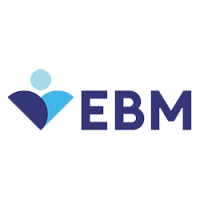
Gold Sponsors


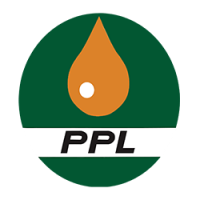

Silver Sponsors

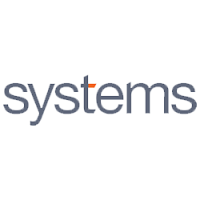

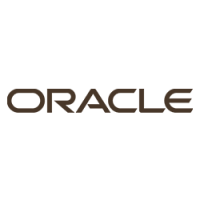
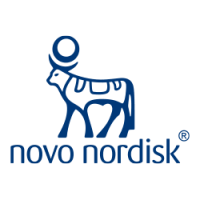
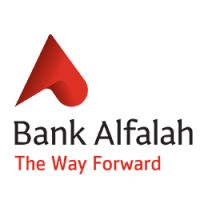
Winners of Best Place to Work Pakistan Awards 2021
‘Best Places to Work 2021’ (This category has winners from all-sized companies – small, medium and large)
- Best Place to Work 2021 – Bank Alfalah
- Best Place to Work 2021 – METRO Pakistan Pvt Ltd.
- Best Place to Work 2021 – Novo Nordisk
- Best Place to Work 2021 – VentureDive
- Best Place to Work 2021 – Allied Bank
- Best Place to Work 2021 – Arbisoft
- Best Place to Work 2021 – My Technology
- Best Place to Work 2021 – Careem
- Best Place to Work 2021 – Leverify LLC
- Best Place to Work 2021 – Mahmood Group
- Best Place to Work 2021 – Afroze Textile Industries
- Best Place to Work 2021 – Oracle Pakistan
- Best Place to Work 2021 – Stewart Pakistan
- Best Place to Work 2021 – Challenge Apparels Limited
- Best Place to Work 2021 – Munch: ON
- Best Place to Work 2021 – Greenstar Social Marketing
Check out announcement on LinkedIn
‘Best in Industry Awards’
- Best Business Group – Métier Groupe
- Best Place to Work in the E-Commerce Industry – Careem
- Best Place to Work in the Education Industry – Lacas School Network
- Best Place to Work in the Energy/Oil & Gas Industry – BYCO Petroleum
- Best Place to Work in the Financial Sector – Allied Bank (Winner), Bank Alfalah (Runner-up)
- Best Place to Work in the FMCG Industry – EBM
- Best Place to Work in the Government/NGO Sector – Greenstar Social Marketing
- Best Place to Work in the I.T Industry (Medium-size organization) – Oracle Pakistan
- Best Place to Work in the I.T Industry (Large-size organization) – VentureDive (Winner), Stewart Pakistan (Runner-up)
- Best Place to Work in the Logistics Industry – DHL Express
- Best Place to Work in the Manufacturing/Engineering Industry – ICI Pakistan Limited
- Best Place to Work in the Pharmaceutical/Life Sciences Industry – Novo Nordisk (Winner), Pfizer Pakistan (Runner-up)
- Best Place to Work in the Retail Industry – METRO Pakistan Pvt Ltd.
- Best Place to Work in the Services Industry – Gerry’s International
- Best Place to Work in the Telecom Industry – Ufone
- Best Place to Work in the Textile Industry (Medium-size organization) – Challenge Apparels Limited
Check out announcement on LinkedIn
‘Most Preferred Employer Awards’ (Winners here are chosen by professionals from other companies, not from the winning ones)
- Most Preferred Employer in the Pharmaceutical Industry – GSK
- Most Preferred Employer in the Telecom Industry – Jazz
- Most Preferred Employer of Pakistan – Unilever (Winner), Nestlé (Runner-up), Engro Corporation (Runner-up)
- Most Preferred Employer in the Financial Industry – State Bank of Pakistan
- Most Preferred Employer in the I.T Industry – 10Pearls
- Most Preferred Employer in the Textile Industry – Interloop
Check out announcement on LinkedIn
‘Special Category Awards’
- Best Company in Navigating the Pandemic – DHL (Winner), Novo Nordisk (Runner-up), Stewart Pakistan (Runner-up)
- Most Engaged Female Employees – VentureDive
- BPTW21 Most Improved Score – PTCL
- BPTW21 Best Entrant Award – Careem
Check out announcement on LinkedIn
‘Best of the Best Company 2021’
(Biggest award of the night, given to the Best Company in Pakistan according to BPTW Study 2021)
- Best of the Best Company Award 2021 – DHL Express
Check out announcement on LinkedIn
See Winning Moments
The Secret Recipe to Building High-Performance Teams
Teams of all shapes and sizes have found themselves struggling during the coronavirus pandemic. With tight timelines, low budgets and stress on employees to produce superior results, leaders have been trying to overcome the challenges these unprecedented times have been throwing at them.
It’s quite evident that weak teams will be crushed by the smallest amount of tribulation. Mediocre teams will survive it, but the highest performing teams will continue to thrive and grow.
Here, I’ve identified five special ingredients required to develop high performance teams:
#1 Have Defined Roles and Complementary Skills
A team may have one large task but there are several smaller tasks that make up that large task. And each of these smaller tasks requires different skills. While some may demand technical skill, others may lean towards the creative side and require someone who can figure out a way to turn the mercurial ideas into something solid and real.
You cannot expect your team to function well if all the individuals possess the same skill set. The point is, each team member must bring something unique to the table. Firstly, this helps each team member better understand their role and focus on the action steps that will bring the team closer to the larger goal. Secondly, it makes it much easier for you – as a leader – to assign tasks to people with relevant skills.
Moreover, it is best to bring together a variety of personality types that complement each other. Gartner research found that leaders who use complementary leadership saw a 60% increase in their teams’ performance and a 40% increase in their own performance.
So, you must be mindful of the fact that creating a team full of leaders would wreak a havoc. It is highly likely that they will have conflicting views and hence your team will pulled in different directions. On the flip side, you cannot build a high performing team with people who only focus on the details and lose sight of the bigger picture.
Although there are a number of different team role inventories out there, I always prefer Belbin team roles as it’s easy to explain, identify and use.
#2 Share a Co-Created Purpose and Aspirational Goal
According to Harvard Business Review, employees who are intrinsically motivated are three times more engaged than employees who are extrinsically motivated (such as by money). In other words, your team will be willing to go the extra mile if it is driven by intrinsic reasons. My favorite explanation of this concept is by Peter Fuda who through this animation explains that it is better to have your team members driven by a burning desire instead of a burning platform.
While rewards and remuneration can stimulate people temporarily, your team members will intellectually and emotionally commit themselves and make sustained effort if they have a purpose and vision that inspires and excites them.
#3 Have An Aligned Strategy and Implementation Plan
As the Japanese proverb goes, “Vision without action is a daydream. Action without vision is a nightmare.” By finding an inspiring purpose, you have only taken the first step. In order to accomplish that purpose, you should be able to answer the following questions:
-
How are you going to achieve this?
-
What are your 5 Must-Win Battles?
-
Who will do what, where and by when?
#4 Follow a Clear and Methodical Execution Process
Many people tend to get excited about execution and directly jump into activities before they create a plan and connect what they’re doing to the strategy of the organisation. At the end, even the best and most diverse teams with a strong purpose and aligned strategy will fail to deliver if they don’t agree on:
-
How they will make decisions
-
How they measure progress
-
How they will communicate with each other
As a leader, it is your responsibility to ensure you provide others with clear direction and a sense of connection to the strategy of the organisation so they understand how their work dovetails with the organisation’s mission.
#5 Adapt, Learn and Persevere
High performance teams rarely get stuck in a stagnant work process as they are able to spot potential errors ahead of time and adapt its processes to overcome those challenges. They encourage experiments and aren’t afraid to try new ways of doing things. This is why, they are agile enough to change course when they don’t seem to be getting the desired results.
With their ability to adapt, find alternative routes and surmount formidable obstacles, high performance teams can always look for new ways to improve productivity and achieve better results.
How to Use 360-Degree Feedback for Leadership Development
Like all other spheres, people in HR and talent-development arena are always looking for a new tool. Currently, data analytics is capturing attention of business leaders finding a fresh way to improve performance, productivity, and talent alignment.
However, as much as we embrace it, there are still tried-and-tested talent-development methods that, when applied appropriately, can be integral components of HR programs designed to get the most out of people. Of them, 360-degree feedback process is one of the best.
In the HR realm, the 360 Feedback is the precursor of People Analytics. Not only does it provide a broader view of performance, it also enables you to sort data in numerous ways.
As a multi-dimensional leadership development tool, 360-degree feedback allows you to receive clear, actionable feedback from your peers, employees and managers, thus helping you improve your performance and manage people more efficiently. Additionally, as there are multiple perspectives involved, 360-degree feedback is much more comprehensive and less prone to individual bias.
Here are a few points you might want to consider when carrying out 360-degree feedback for leadership development:
Educate the Team
If your workforce doesn’t have a clear definition of leadership or has conflicting views, why not address the question to your employees?
While you would know your company’s strategy and vision as a leader, your employees can tell you how to achieve it. Educate your team on your intentions, the objectives, the process and the importance of keeping your 360 feedback confidential to make the most of this tool.
Find out from you team members whether the managers are walking the talk and if your strategy is being implemented on the ground. Ask employees about the behaviors they admire in their peers, direct reports or managers.
One of the biggest impediments to changing a company culture and delivering on a strategic vision is managerial engagement. With 360 Feedback, you can unravel the current state of play.
Assess Leadership
Once you have defined the qualities and traits needed to become a leader in your organisation and have educated your team, it’s time to assess your current crop of leaders and identify new high potentials.
Ask a leader’s direct reports, peers and managers to assess them against this leadership criteria. This will ultimately give you an idea of a leader’s strengths and weaknesses and allow you to highlight areas for professional development. Using the results of 360 Feedback, you can also create tailored training programs to develop certain leadership skills.
Have a Crystal Clear Idea
It’s important to be clear on what you’re going to use the 360 feedback for. I advise that you don’t succumb to the temptation of secretly using the results of your direct reports for performance decisions.
Also, avoid to suggest a 360 feedback process for an under-performing employee. Rather, be courageous and have an authentic conversation with the individual about their performance and find ways to improve it.
Monitor Progress and Growth
Leaders naturally have an aversion to micromanagement. In fact, one of the most significant drivers for job satisfaction among leaders is autonomy. This is why it can be challenging to combine performance measurement as well as let your leaders do their thing.
360 Feedback offers a less intrusive way of monitoring leaders. The results can prove to be quite useful for leaders as well since it allows them to see how their team perceives them — in contrast to simply hitting targets or having one-to-one appraisals with a manager.
360 Feedback shows how one is viewed as a leader in the truest sense – how much they inspire and motivate team members, or how their efforts to drive change and improvements are being considered.
Performance Management in a Post-COVID Workplace: Things to Consider
The dramatic spread of COVID-19 has disrupted the way organisations work, with many experiencing adjusted goals, furloughs, and even layoffs. In order to better respond to the current context, it has become necessary for organisations to re-evaluate aspects of their performance management system – and in some cases adopt an entirely new system.
Even experienced managers and employees may find performance management conversations daunting when they are not carried out properly. And during this period when we are already dealing with a lot of uncertainty and economic downturn, employees’ worries are likely to escalate.
Here are some points you need to consider when managing employee performance in the age of COVID:
Collect Perspectives
When it comes to getting a 360-degree review, managers need to actively solicit feedback. And now organisations are placing an equal – or greater – emphasis on peer reviews as they do on a manager’s review because they have proven to accelerate an employee’s skillset and leadership development.
With their willingness to share candidly “the good, the bad, and the ugly,” peers can provide insights that lay the groundwork for focused leadership development or executive coaching.
Here is another reason why it’s important to incorporate team-based feedback into performance conversations. A research by Gartner reveals that there is a 3.5% increase in the utility of performance management and a 14% increase in employee performance when employees are evaluated by peers with interconnected work and shared goals.
Notwithstanding, in a 2019 Gartner survey, 99% of respondents said that direct managers evaluate employee performance whereas only 17% said they are evaluated by their teams.
As a manager, solicit feedback from other members of the team to learn about a person’s strengths and areas for improvement. Also, make sure that you collect information on an employee’s ability to work remotely. Find out whether they are effective at communicating while working remotely and if their productivity has increased or decreased since moving to remote work.
Summon Compassion and Empathy
When you’re gathering feedback, it is crucial to keep context in mind and fully acknowledge the varying circumstances your team members are operating under. If an employee, for instance, has faced trying circumstances outside of work, such as a family member with COVID-19, do not disregard it. Similarly, if it has not been possible for an employee to do their full job remotely, you should also factor that in.
With the emergence of COVID, the targets that were set for this year are no longer applicable. Instead of judging your employees against the company’s pre-pandemic objectives, concentrate on your individual employee’s growth and learning.
COVID has hit people’s mental health in different ways. So be compassionate and empathetic, and give people a little more latitude. Acknowledge and reward your employees’ resilience and capacity to adapt during these challenging times. And they may in turn become more engaged with your organisation.
It’s Time to Burn the Boats
Even if you cancel bonuses, award ceremonies or merit increases, don’t stop tracking performance and communicating to your employees that you appreciate and need high performance.
Truth be told, traditional performance management systems are likely to disengage your people in normal times and thus will do far worse harm today. Now is the time to burn the boats and leave old practices behind. As an employer, you must adopt a performance management strategy that is not just adaptive and responsive but also calibrated to the new workplace.
This shows that the need for fundamentals of good management is stronger than ever: agile goals, extraordinary coaching and high accountability systems. When the smoke clears, you need to know who your stars were – and you have to keep those people engaged.
Building Better Teams: How to Keep Your Team Aligned for Organisational Success
Organisations typically approach building team alignment by setting and sharing a company vision. However, their efforts often fall flat because they fail to resonate with team members on the ground. Additionally, leaders overlook the importance of communicating to the individuals how they personally contribute to the bigger picture.
From the top-level managers down to the entry-level employees, everyone needs to share a mission and set of values to stay on the rails.
Here are some techniques to help align your team around what you need to do and get everyone on the same page.
Align Your Goals and Share Status
As a business leader, you must be quite familiar to the exercise of annual goal planning. Setting and aligning goals tremendously impacts the overall team performance as well as boosts employee engagement. Plus, everyone understands what the prize is and what they are working towards.
While it may be a daunting task to define company, department, and team level objectives at the start of each year, with a disciplined approach your team will have a crystal clear idea of what they are trying to accomplish. Even better, when your employees understand how their individual work contributes to the organisational strategy – and to the society as a whole, their individual performance and employee experience is likely to receive a boost.
So collaborate as a team, determine your priorities and then break them down into individual objectives. But of course, this process doesn’t just end with setting and forgetting goals. Driving alignment entails that you constantly update the status, celebrate even small successes, and re-orient the challenges along the way.
In case you’re thinking this is too obvious, let me share an MIT Sloan report with you, according to which only 28% of executives and middle managers tasked with strategy execution could list three of their company’s priorities. Yes, only 28%. The alignment only gets worse as you move further away from the decision makers. So start with the basics and measure your goals.
Schedule One-On-Ones
As much as it is crucial to focus on your team as a collective whole and ensure your team members feel connected to their coworkers, the importance of one-on-one meetings cannot be disregarded.
Managers, especially executives, have the luxury of seeing the forest for the trees. One-on-ones serve as good venues to identify opportunities and problems, allowing you to see across your team to create alignment. They give you a chance to understand their motivations, fear, challenges and concerns.
In times of crisis, it is extremely important to leverage the power of one-on-one meetings to keep the employees reassured and aligned on the new and often shifting priorities. As workday pressures and time constraints may get the better of us, it is a good idea to jot down a list of bullet points that you’d like to discuss and ask your direct report to do the same.
Cut Through the Clutter
A research by Deloitte indicates that 72% of employees don’t have access to the information they need from their company systems. What’s surprising is, this is the information they need to perform their tasks efficiently. Alignment comes afterwards.
Employees are not only overwhelmed with the crises affecting the world today, they are also staggered by the state of work. To crown it all, at least 85% of employees are already disengaged.
Leaders wanting to drive team alignment must help their teams stride across the noise and clutter of the workplace. You need to ensure your team members find purpose in their work and understand how they are a part of something bigger. Your employees shouldn’t have to struggle to obtain basic information like customer case studies or the product roadmap if you want to make them feel valued for their contributions.
An important part of your alignment strategy, therefore, has to be easy access to the basics. Make sure you team resources are readily available. Also, perform an information audit to get rid of the distraction and clutter caused by outdated information. Doing so will save your team from spending time working through useless content.





